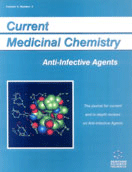Abstract
Involvement of sialidases in a variety of microbial infections apart from that by influenza virus has been demonstrated but in contrast to the latter, where potent inhibitors have been developed on the basis of the lead compound 2-deoxy-2,3-didehydro-N-acetylneuraminic acid, inhibitor design for bacterial or trypanosomal sialidases has proven to be much less straightforward. This review intends to give an overview of the attempts, which have been made, including both substrate analogues and transition-state analogues of the sialidase reaction as well as structurally unrelated compounds. The bifunctionality of the viral haemagglutininneuraminidases, supported by recently obtained crystal structure data, or the modular architecture of some bacterial enzymes provide useful starting points for improvement of inhibitors through additional interactions beyond the active site itself. This seems especially to be the case for trypanosomal trans-sialidases the inhibition of which might require some sort of acceptor mimic in addition to the sialic acid analogue.
Keywords: neuraminidase, sialidase, inhibitors, n-acetylneuraminic acid, sialic acid, bacteria, influenza virus, parasites
 3
3

